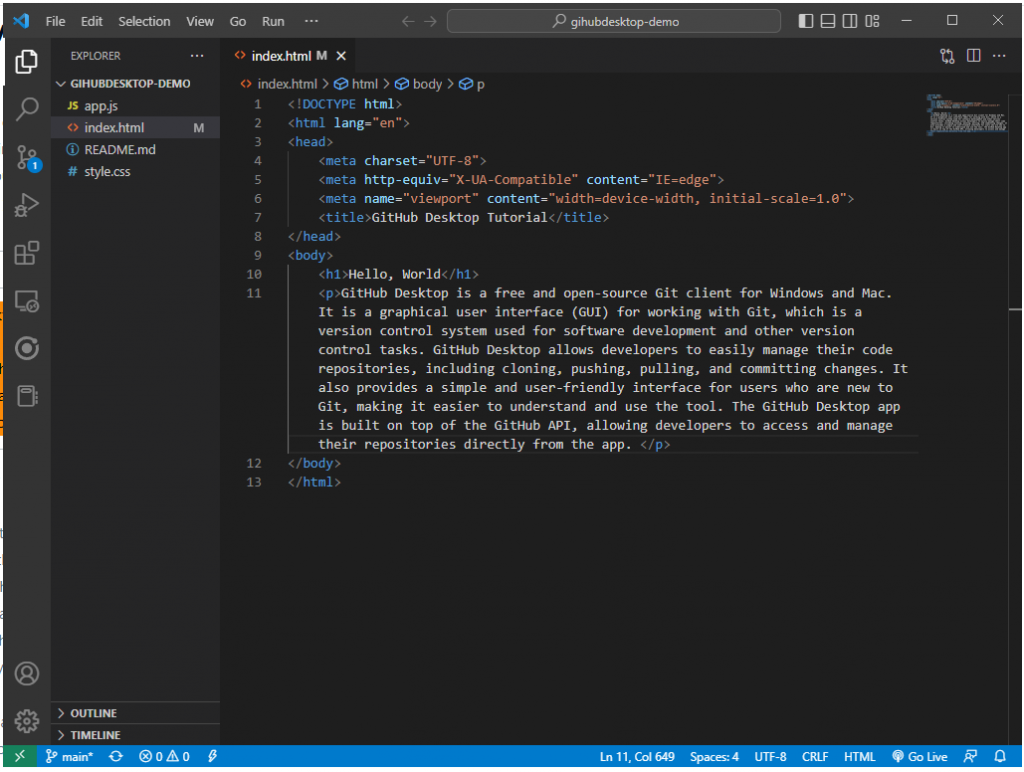Welcome to our tutorial on “How to use GitHub Desktop”. In this tutorial, we will cover the essential features of GitHub Desktop that allows developers to easily manage their code repositories. We will go through step-by-step instructions on how to clone a repository, make changes, push those changes to the repository, pull in changes made by others, and commit your changes. With this tutorial, you will be able to collaborate with others on projects, and have control over your code. Let’s get started!
what is GitHub Desktop?
GitHub Desktop is a free and open-source Git client for Windows and Mac. It is a graphical user interface (GUI) for working with Git, which is a version control system used for software development and other version control tasks. GitHub Desktop allows developers to easily manage their code repositories, including cloning, pushing, pulling, and committing changes. It also provides a simple and user-friendly interface for users who are new to Git, making it easier to understand and use the tool. The GitHub Desktop app is built on top of the GitHub API, allowing developers to access and manage their repositories directly from the app.
Here are the steps to install Github Desktop on your Windows or Mac computer:
- Go to the GitHub Desktop website (https://desktop.github.com/) and click on the “Download for Windows” or “Download for Mac” button.
- Once the download is complete, open the installer file and follow the prompts to install the software.
- After the installation is complete, open GitHub Desktop from the start menu or application launcher.
- If you already have a GitHub account, sign in to GitHub Desktop using your account credentials. If you don’t have an account, you can create one directly from the application.
- Once you are signed in, you can start using GitHub Desktop to manage your code repositories.
Note: If you are installing on Windows and you have Windows SmartScreen enabled, you may receive a security warning when trying to run the installer. If this happens, click on “More Info” and then “Run Anyway” to proceed with the installation.
That’s it! Now you have successfully installed GitHub Desktop on your computer, and you can start using it for your development work.
Clone Repository using GitHub Desktop
Here are the steps to clone a repository using your GitHub Desktop.
1. Copy the URL of the Repository.

2. Open GitHub Desktop then in the Menu select File under the file choose Clone Repository.

3. Then in the Clone Repository, click the URL button then paste the GitHub Repository and click the Clone button

4. Once it’s done, you can open the file using your IDE. Just click the “Open in (IDE)“

5. Do changes to the code, then back to GitHub Desktop.


Commit and Push Changes in GitHub Desktop
1. In GitHub Desktop, enter the Summary(Required) of your changes then click the Commit to Main button.

2. After that click the Fetch Origin or Push Origin.

3. Go to GitHub then check the changes to your code.

Pull Changes to GitHub Desktop
To check if your teammates or you have made changes on other devices.
1. In GitHub Desktop, click the Fetch Origin button.

2. Then click Pull Origin and see changes to your local code.

That concludes our tutorial on “How to use GitHub Desktop for cloning, pushing, pulling, and committing.” We hope you found this tutorial helpful in understanding how to use GitHub Desktop to manage your code repositories. With GitHub Desktop, you can easily clone repositories, make changes, push those changes to the repository, pull in changes made by others, and commit your changes. This will help you collaborate with others on projects, and have control over your code. Remember that GitHub Desktop is a powerful tool that can streamline your development workflows, so be sure to take advantage of all its features as you continue to work on your projects. If you have any questions or need further assistance, don’t hesitate to reach out to the GitHub community for support. Happy coding!
Read more about Version Control: https://www.nucleiotechnologies.com/why-version-control-is-essential-for-software-development/
